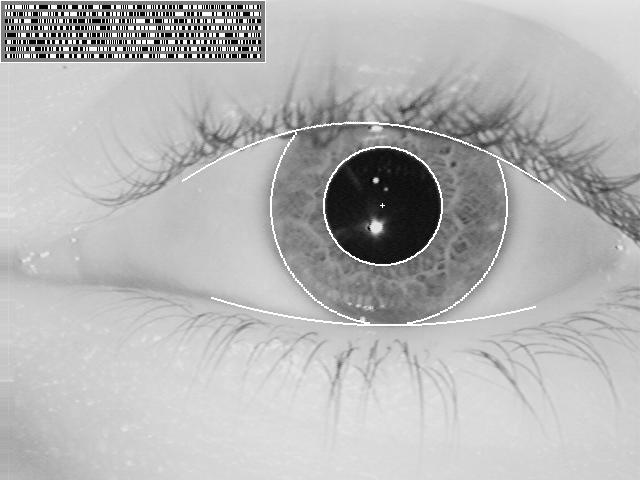
The technology combines computer vision, pattern recognition, statistical inference, and optics. Its purpose is real-time, high confidence recognition of a person's identity by mathematical analysis of the random patterns that are visible within the iris of an eye from some distance. Because the iris is a protected internal organ whose random texture is complex, unique, and very stable throughout life, it can serve as a kind of living passport or password that one need not remember but can always present. Because the randomness of iris patterns has very high dimensionality, recognition decisions are made with confidence levels high enough to support rapid and reliable exhaustive searches through national-sized databases. The algorithms for iris recognition were developed at Cambridge University by John Daugman.
The major applications of this technology so far have been: substituting for passports in automated border crossing; expediting security screening at airports; controlling access to restricted areas; Children's Identification and Location Databases (CHILD); school and hospital settings including mother-infant pairing in maternity wards; database access and login; prisoner booking and release; detainee identification and suspect tracking in Iraq and Afghanistan; and "watch list" screening at border crossings. In several countries it is being considered for biometric Identity Cards. Airports worldwide use these algorithms with iris cameras for passenger screening and immigration control in lieu of passport presentation, including 10 UK airport terminals, Amsterdam Schiphol, Frankfurt, 8 Canadian airports, and many US airports in the Registered Traveller "Clear" programme. In UK project IRIS (Iris Recognition Immigration System), over a million frequent travellers have registered in this programme for automated border-crossing using iris recognition. Such passengers do not even need to assert their identity; they just look at the camera in the automated lanes. On the Pakistan Afghanistan border, the United Nations High Commission for Refugees has used these algorithms for anonymous identification of returning Afghan refugees receiving cash grants at voluntary repatriation centres. The earliest large-scale deployment of these algorithms has been operational since 2001 in the United Arab Emirates, where every day about 12 Billion iris comparisons are performed in real-time database searches. Travellers entering the UAE at its 35 air, land, and sea ports have their IrisCodes quickly computed and compared against all the IrisCodes in a central database; you can find out more about that application here. An even larger deployment is for ID cards in the Indian state of Andhra Pradesh, which you can read about here. Iris recognition is forecast to play a role in a wide range of other applications in which a person's identity must be established or confirmed more reliably than merely by possession of documents or codes.
The Daugman algorithms for iris recognition are owned today by L1 Identity Solutions and licensed through its subsidiary Securimetrics. The algorithms won the British Computer Society's IT Award and Medal; the Smithsonian Award; and the "Time 100" Innovation Award. The technology was designated a Millennium Product by the UK Design Council, and Daugman was one of three Finalists for the European Inventor of the Year Award 2009.
Companies in several countries are now using these algorithms in a
variety of products and services. Information about their applications can be
found on the following websites: